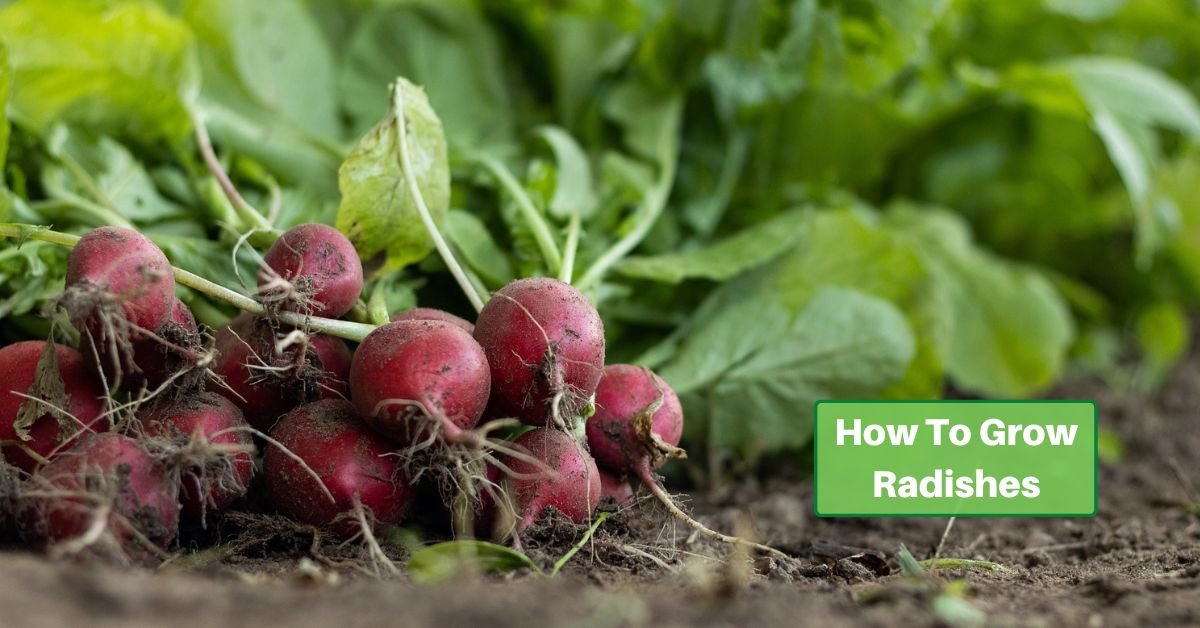The peppery taste of radishes is a delightful addition to salads and so much more! Like carrots, radishes grow as a taproot. When you pull them up, you’ll enjoy a fantastic addition to your table that stands out for its crunchiness and flavor. So let’s explore how to successfully grow radishes in your garden!
Planting Radish Seeds
Radish seeds are small. You can sow them directly into the garden bed.
They prefer well-drained, loose soil. Before planting, work the soil between 6 and 8 inches down. Compost will improve soil fertility and structure.
Sow the seeds about 1/2 inch deep and space them about 1-2 inches apart. If you’re growing multiple rows, separate them by 8-12 inches.
Order Radish Seeds Online
Choosing the Right Time to Plant
Radishes grow best in cool weather, meaning you can successfully grow them in both spring and fall. For spring planting, sow radish seeds as soon as the soil can be worked. For fall planting, sow the seeds about 4-6 weeks before the first expected frost date in your region.
Sunlight Requirements
This crunchy vegetable thrives in full sunlight and needs at least 6 hours of direct sunlight daily. Choose a sunny spot in your garden to ensure healthy plant growth and optimal root formation.
Fertilizing and Watering
Radishes don’t require heavy fertilization. You want to avoid giving them too much nitrogen since that can lead to excessive leaves that take nutrients away from root development. An all-purpose fertilizer before planting is sufficient.
Keep the soil moist to encourage rapid growth and prevent the radishes from becoming woody or bitter. Water the plants regularly but avoid overwatering, as soggy soil can lead to rot.
Thinning and Care
Radishes can be sown densely, but thinning is necessary to allow sufficient space for root growth. Once the seedlings emerge and develop their first true leaves, thin them to about 2-3 inches apart. But they don’t have to go to waste; the thinnings can be enjoyed as tender baby radishes.
Pest and Disease Management
Radishes are generally resistant to many pests and diseases. However, keep an eye out for common garden pests like aphids and flea beetles. If pest problems arise, consider using insecticidal soap or introducing natural predators.
Harvesting Radishes
Harvesting radishes at the right time ensures the best flavor and texture. Radishes are typically ready to be harvested within 20-30 days after planting, depending on the variety. You can gently pull a radish from the soil to check its size; if it’s the desired size and has a firm texture, it’s ready to be harvested.
Overgrown radishes can become bitter and lose their crispness, so harvest them promptly when they reach maturity.
Growing your own radishes is a satisfying and flavorful endeavor that yields quick and nutritious results. They grow to maturity quickly, and you can take advantage of two growing seasons a year (more, if the weather stays cool where you live). With the right combination of sunlight, water, and just a little attention to pests, you’ll be able to savor the great and unique taste straight from your yard!










